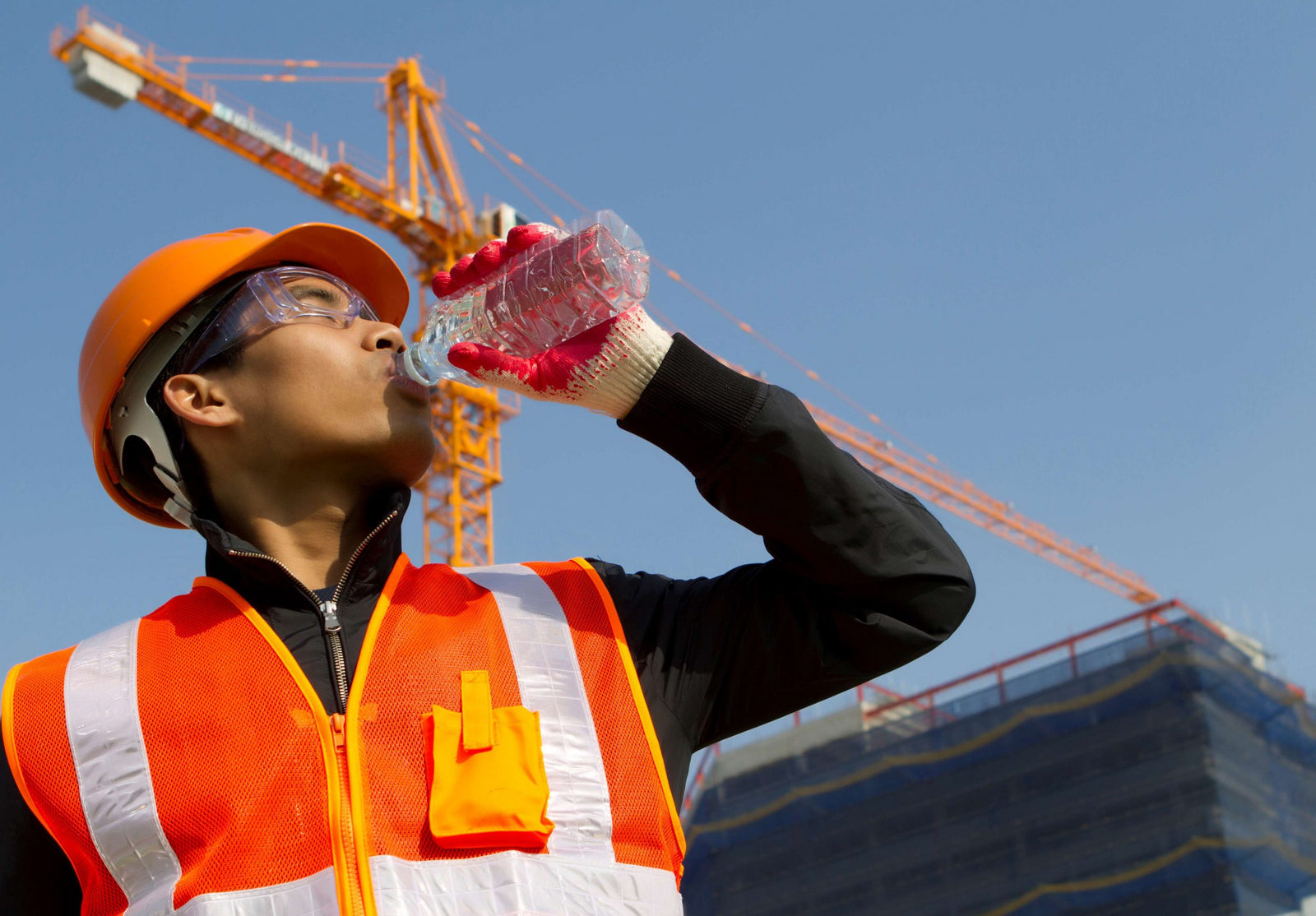The Korey Stringer Institute, founded after NFL player Korey Stringer’s tragic death due to heat stroke, has identified four critical factors to combat heat-related illnesses: hydration, heat acclimatisation, work-to-rest ratios, and body cooling.
Here’s how these principles can be applied to industrial settings.
Understanding the Risk: Thermoregulation Basics
Thermoregulation is the body’s process of maintaining a stable internal temperature. When exposed to extreme heat, the body cools itself through sweating. However, prolonged heat exposure can overwhelm this process, leading to hyperthermia and potentially life-threatening conditions like heat stroke.
Studies show that if the body is cooled within 30 minutes of overheating, survival rates are 100%. But without timely intervention, the risks of severe illness or death increase dramatically.
Heat Stress Prevention Factor 1: Hydration
Water is the foundation of life—comprising 60% of body weight, 75% of muscles, and 80% of the brain. In high-heat environments, sweat production increases to cool the body. If fluids and electrolytes lost through sweat aren’t replaced, dehydration sets in, quickly escalating the risk of heat-related illnesses.
Best Practices for Hydration:
- Frequent Fluid Intake: OSHA recommends 5-7 ounces of water every 20 minutes. For longer shifts, electrolyte beverages can replenish salt lost through sweat.
- Convenient Solutions: Use hydration packs to ensure workers in remote or PPE-heavy environments can stay hydrated without disruptions.
- Education: Train workers to recognise early dehydration signs, like dizziness or muscle cramps, and monitor their hydration levels using urine colour as an indicator.
Heat Stress Prevention Factor 2: Heat Acclimatisation
Acclimatisation is the gradual adaptation of the body to work in extreme heat. It’s particularly important for new workers and those exposed to unexpected heatwaves. Research shows that most heat-related illnesses occur within the first few days of exposure.
How to Acclimatise:
- Ease workers into heat exposure over 7-14 days.
- Reduce workload and intensity during the hottest parts of the day
- Encourage rest and hydration during the acclimatisation process
- Follow protocols like those used by the military, ensuring at least 100 minutes of heat exposure daily to build tolerance.
Heat Stress Prevention Factor 3: Work-to-Rest Ratios
Even experienced workers can succumb to heat stress if conditions aren’t carefully managed. Work-to-rest ratios should be adjusted based on environmental factors such as temperature, humidity, PPE requirements, and individual worker health.
Implementing Safe Ratios:
- Use tools like Wet Bulb Globe Temperature monitors to measure heat stress conditions accurately.
- Schedule rest breaks in shaded areas and provide cooling solutions.
- Adjust workloads based on real-time environmental changes and individual worker needs.
Heat Stress Prevention Factor 4: Body Cooling
Body cooling methods can prevent overheating and keep workers safe. From shaded rest areas to cooling PPE, these strategies provide practical ways to maintain safe body temperatures.
Effective Cooling Strategies:
- Location Matters: Choose solutions that work for your site. For example, evaporative cooling products perform best in low-humidity areas, while phase-change technologies are effective in all environments.
- Cooling PPE: Equip workers with hard hat liners, cooling towels, vests, and sleeves to provide ongoing relief.
- Shade and Rest Areas: Set up shaded areas with tents or umbrellas to keep workers cool during breaks and on the job.
Protect Your Team
Heat-related illnesses are preventable when the right measures are in place. By prioritising hydration, acclimatisation, balanced work-to-rest ratios, and effective cooling methods, safety managers can ensure a safer working environment—even in extreme heat.
For more insights and resources explore our range of cooling PPE solutions at Absafe Shop. Stay cool, stay safe!

